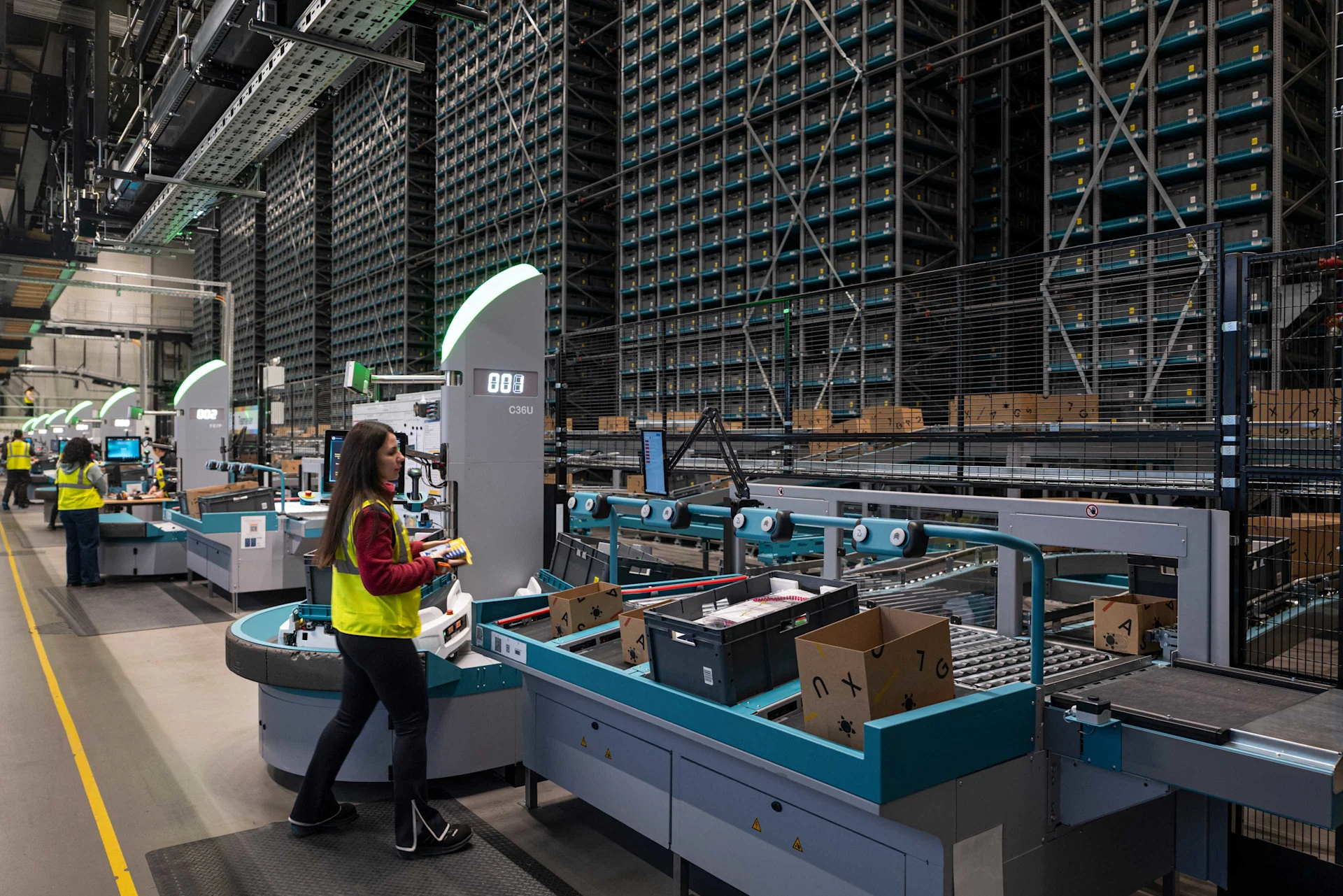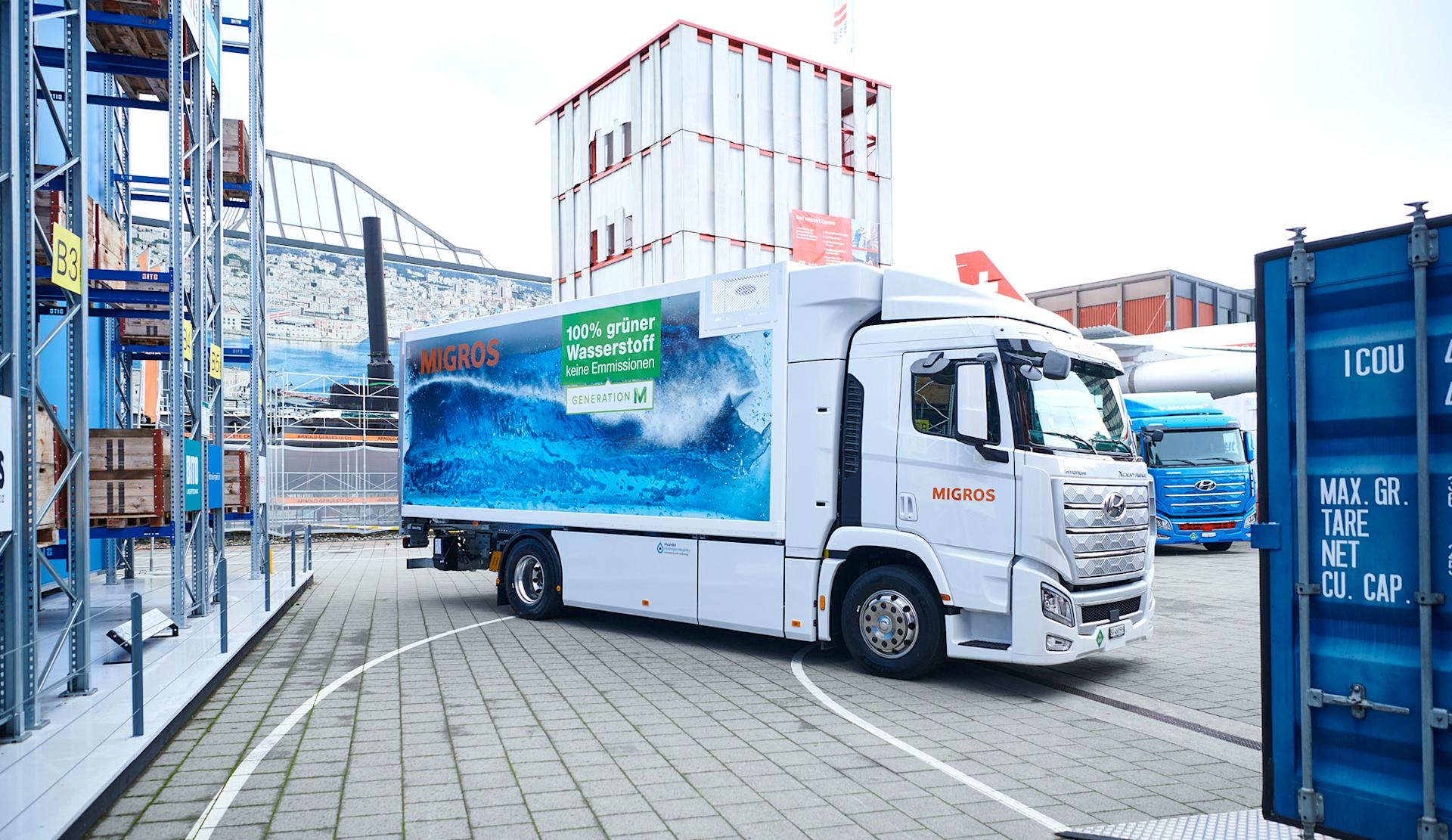
Work environment
Where our presents come from
We visited the huge Digitec Galaxus logistics centre, which is a hive of activity over the Christmas period.
navigation

Climate & energy
With three new hydrogen trucks in its fleet, Migros is further driving the reduction of CO2 in goods transport. In order to do even more for the environment, Migros also utilises biogas and electric engines.
Rainer Deutschmann, Head of Logistics Transport at Migros, explains why several different systems are used for decarbonisation.
Rainer Deutschmann, Migros purchases hydrogen trucks as well as electric and biogas vehicles. This could give the impression that the company isn’t properly concentrating on any one thing.
We worked closely with the interdisciplinary research institute of the ETH Domain for material science and technology (EMPA) to determine our requirements. This analysis made it clear that it is wise to rely on various different technologies to ensure we are using the most suitable truck for each section of the route.

So what exactly does this mean?
A truck with an electric drive, for example, is ideal for deliveries in the city as its battery capacity is relatively low with a range of only around 200 km. It is also very quiet, which is a bonus when it comes to early-morning deliveries. The hydrogen vehicle has a very powerful engine and can therefore be used for longer distances such as between two cities.
How do you know which technology is suitable for which journey?
Information technology plays just as important a role as drive technology in this regard. This is why we always refer to it as a decarbonisation and digitalisation strategy. We developed a simulation system for our entire fleet to ensure we use the right drive.
How exactly does it work?
When I plan a delivery from A to B, the system shows me at a glance how many kilograms of CO2 I could save with a particular truck. Our IT system has stored thousands of GPS datasets recorded by drivers with their smartphones. The system takes into account both the distance as well as the topography of a route.
There will only be six filling stations in Switzerland for hydrogen trucks in 2021. Is that not an obstacle when it comes to developing this technology?
No – our first three trucks will only travel in Eastern Switzerland, Zurich and Suhr to supply the Migros and Migrolino branches there. In all three cases, there is a filling station close to the corresponding centre. For further development, Migros founded the H2 Mobility Switzerland Association together with Coop, Fenaco and Avia. We have set ourselves two targets: within four years, we want to establish a network of over one hundred filling stations and put thousands of hydrogen trucks on the road.
And what about rail transport? Is it still a top priority for Migros logistics?
Yes, it remains an essential mode of transport for the delivery of goods, particularly between the industrial plants and logistics centres. The three technologies we have discussed are a good supplement but are not considered secondary. They could allow us to reduce CO2 emissions enormously.
And what about Cargo Sous Terrain?
The project is still very important. Migros was one of the initiators of this project 10 years ago. We’re now closely involved in the development by mobilising financial and human resources. Estimates predict that the first section between Härkingen (canton of Solothurn) und Zurich could be finished by 2031.
Discover exciting stories about all aspects of Migros, our commitment and the people behind it. We also provide practical advice for everyday life.